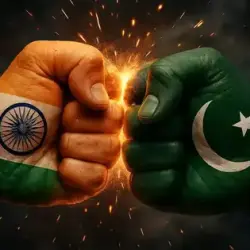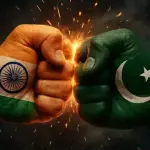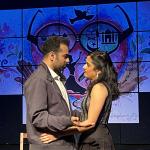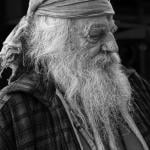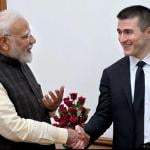 It is said of Vatsyayana’s Kamasutra, that it is the greatest book of love ever written. Below are the links to download the Kamasutra book in pdf. The books are available in Hindi and English.
It is said of Vatsyayana’s Kamasutra, that it is the greatest book of love ever written. Below are the links to download the Kamasutra book in pdf. The books are available in Hindi and English.
All the books are available for downloads as pdfs, and are free. However, since it takes quite an effort to scan and create them as ebooks, please consider making a small donation. You can enter the amount once you click on the books below.
Kamasutra PDF Book Download: English & Hindi
PDF In Hindi (without pictures – 2.8 MB): Download PDF (Right-click and Save-as)
PDF In English (Positions depicted through sculpture – 8.3 MB): Download PDF (Right-click and Save-as)
In English (Illustrated pictures – 1.3 MB): Download PDF (Right-click and Save-as)
Print versions are available from Flipkart in India and Amazon in the US.
Lance Dane gives a beautiful explanation of what the Kamasutra is all about and why it is significant: “I believe that not only did Vatsyayana’s book come after several sacred compilations about the ritual of love making, but it enshrined the essences of two thousand years or more of the worship of love. He made love holy. He touched off the sources of love in the twin souls of man and woman. He revealed how tenderness, in the approach of the bodies of male and female, could take the co- equals to the depths of each other. He exalted the intensity of spontaneous love. He filled the physical union with a grace that uplifted the human couple to the state of godhood. The magical image was dramatised, so that it may yield the power to bring forth progeny and pleasure.”
The contents of the Kamasutra are given below, with rough translations of the various sections and parts of the text. The text in total has seven sections, each referred to as a book, and each book in turn has several sections.
Kamasutra PDF Book Contents
Book I
Sadharana or general principles: This book is a more of a general introduction and includes 5 parts.
Part I Study of the shastras
Part II Dharma, artha and kama
Part III Study of arts and sciences
Part IV Man-about-town
Part V Qualities of a go-between (messenger)
Book II
This book essentially covers Samprayogika, or love play and sexual union. It refers to many aspects of love-making rather uncandidly and has 10 parts!
Part I Sexual union
Part II The embrace
Part III The kiss
Part IV Pressing and various nail-marks
Part V The bite
Part VI Sexual vigour and intensity
Part VII Acting as a man
Part VIII Oral congress
Part IX Beginning and end of congress
Part X Kanyasamprayuktaka: courtship and marriage
Book III
This part deals with aspects of betrothal and marriage. It has 5 parts and gives many “tips” to court a woman and win her over. Later in the book, Vatsyayana also gives “tips” on how a woman can win over a man.
Part I&II Instilling confidence in the bride
Part III Courting a maid
Part IV Behaviour of a couple
Part V Kinds of marriage
Book IV
This section looks at family life and marital bliss, and how each member of marital situation mut conduct themselves. The book has 2 parts. It looks at seduction of others” wives!
Part I Bharyadhikarika, the wife duties of a wife eldest and junior wives
Part II Paradarika, seducing the wives of others
Book V
This book has 6 parts and deals with the various ways and wiles of both men and women, and how one can make out whether an opposite member is attracted to them.
Part I Characteristics of men and women
Part II Making acquaintance
Part III Ascertaining emotions
Part IV Duties of a go-between
Part V Behaviour of a king
Part VI Conduct of ladies of the inner court
Book VI
This section looks at rather diverse topics and has 6 parts.
Part I Vaishika, the prostitute
Part II Beguiling the right man
Part III Living like a wife
Part IV Means of acquiring wealth
Part V Special gains
Part VI Gains and losses
Book VII
The final section looks at making the body beautiful and other ways of sexual pleasure and satisfying sexual desire. It is called Aupanishadika, secret love, extraneous stimulation and sexual power
Part I Beautifying the body
Part II Regarding virility
The Significance of the Kamasutra Book
Truly, if one heeds the wisdom enshrined in the Kamasutra, we can see that the sage Vatsyayana showed an immense grasp of the relationship on ida and pingala, the inner man and woman in every human being. This is the underlying basis of the Tantric principles, and is the foundation of Tantra – to unite the division within, so as to experience union or yoga with the divine. Sanskrit literature is replete with examples of this union described. From Kalidas’s poems to Patanjali’s Yoga Sutras, all are metaphors for the divine union, sometimes represented through yoga and spiritual practice, and sometimes through bhoga or worldly activity. Indeed, every activity was an opportunity to move forward in the path to moksha or mukti, the ulimate liberation which was one of the most significantly, and in fact, the ultimate goal in Hinduism. Spirituality and pleasure were not different in the Hindu way of life. They were just two sides of the same coin.
Comparing this with the dryness of Western literature and its seemingly antiseptic view when it comes to human sexual behaviour, we see an astonishingly liberated and enlightened view in the East towards sexual desire. Lance Dane, who wrote one of the finest commentaries on the Kamasutra by a Westerner, has much to say about this fact. He says in his book on the science of Kama Shastra, “We become aware of the comprehensive grasp of the inner man-woman relationship by the genius Vatsyayana, who lived sometime in the midst of the classical renaissance in the post-Christian centuries. The unabashed directness of his confrontation of sexual relations, the subtleties of his perceptions of feeling, mood and emotion, the delicacy of the nuances of love rendered by a mind, freed from all fears, inhibitions and awkwardnesses of the accepting routine society, have rarely been seen in any civilization.
It is almost as if this sage shared the new kind of perception of the poetry of imperceptible feelings, which the Gupta bards were to bring to their creations along with their awareness of the life of action and conflict and stress on the earth, in the here and the now, in the flesh and the blood, in the search for harmony.
The strange thing is, we feel no shock, when we are ushered from the overtly non-sexual context of our daily lives into the very heart of the privacies of sex. There is no tittering reaction. And none of the titillation of Western eroticism, of the romantic novelist’s insidious approach in the elaborate guilt-conscious masturbation, or the sudden assaults of rape from the pressure of exorcised violences, themselves emerging from prolonged repressions through the “original sin” legend of Adam and Eve eating the fruit and being turned out of the garden of Eden. There is hardly any trace of the boring soul-less life of the brothel.”
Translations of the Kamasutra
In this view, Dane does not differ from prior translators of the Vatsyayana Kamasutra, including Forster Fitzgerald Arbuthnot and his collaboration with the nineteenth century Richard Francis Burton. Burton was the founder of the Kama Shastra society, which published the translation in 1900 in Benares and the University of Chicago, for private circulation only, thanks to Britain’s Obscene Publications Act of 1857, which could have resulted in a jail sentence. The Indians of that era, Bhagwan Lal Indraji and Ananga Ranga also showed this enlightened stance, as did twentieth century Frenchman Alain Danielou. Jayamangala of Yashodhara, the 13th century commentator of the text was also a well-known authority, however his works are more oriented towards the society of that time.
Dane stands out from these translations however, in providing a historic context to understanding the text, and compares it to traditions in other parts of the world. He asks: “How is it, then, that in this book of all books about sex, we feel no surprise at the meeting of the four eyes, the penetration of the linga into the yoni, and the interlocking of two separate organisms in embrace? Why are these unions, recommended by Vatsyayana, different from the kind of furtive connection which takes place from complete ignorance of the feelings of each other, and from the denial of the body-souls, by those who are ashamed of the dream tryst?
In the near reaches of Arabia, Anatolia and Egypt, the Mother Goddess reappeared as another Isis, Ishrt, and the Naked One. But the image is more abstract than concrete. In the early Empires of the Hittites, Babylonians and the Pharaohs, in the cults presided over by the God-King, the ritual confined the freedom of human beings to express themselves, by worship of sex on the altars of the temple. But, beyond the shrines, the people resorted to secret practices, evolving sub myths for their inexpressible desires, in the spontaneous liberation of their body-souls.
In our Indian civilization, the Mother Goddess began, more and more, to be personified as yoni, as we see it in the figurines of Ahichchatra, Kausambi, Nevasa, Bhita, Pataliputra and before long, she appears with her mate, as in the human couples in love of the Mauryan and Sunga terracottas.”
The Kamasutra and Hindu Sanskrit Literature
The exuberant poetry of the Rigveda, seems to have familiarised the myth of creation of the world.
“Desire, then arose, at first within it Desire which was the earliest seed of spirit,
The bond of being in non-being sages,
Discovered searchings in their heart with wisdom.”
In the Upanishads the imagery was more concrete. The mating of man and woman became holy sacrifice: The woman is the fire, her womb the fuel, the invitation to man the smoke, the door is the flame, entering the embrace, pleasure the spark.
In this fire the Gods form the offering,
From this offering springs forth the child.
(Brihadaranyaka Upanishad)
In the Bhagavad Gita, Krishna declares: “I am the Kama that procreates.”
In the two great epics of India, the Ramayana and the Mahabharata, which recreate the desire images of what men and women ought to be, we see the spontaneous urges of the people for free love, and the worship of sex symbols, as the sources of fulfilment, transformed into a prescribed ritual as part of the Hindu Dharmic order.
Dane explains: “The dominant strain of the upper hierarchies of Aryan culture had preferred the poems of the beginning of the Universe to the earthy images of the naked Goddess, which they had seen among the Dravidians. And their verbal ejaculations in praise of the beautiful Usha, the adoring words for Urvashi, and excitement on seeing, Nriti, the dancer, who gently bares her breasts”, had, under the weight of Brahminical injunctions, led to an intricate ritual of symbolic chants in the sacred Sanskrit language. These habitual repetitions had for centuries made the Slokas, verses, more and more rigid. The caste order imposed on the Dasyus had ironed out the variety of ways of life. The high-bred fictions of super-consciousness led to Mount Kailash in the mists.
Below, the Dasyus worshipped the Mother Goddess in secret. She came to be called Lajja Gauri, Shy Woman, with her head cut off, replaced by a garland of leaves, creepers and red oxide of mercury on her pudenda and breasts, and she was prayed to for children in forest shrines, away from the vigilance of the high priests.”
Who Wrote The Kamasutra?
The Kamasutra was probably first put into writing in the third century before Christ, during the Mauryan Period. At this time, some of the great sages seem to have taken an interest in love and sexuality, integral aspects of family life.
Vatsyayana obviously did not write the Kamasutra himself. Love-making was alive and well in India long before him. But he did amalgamate many different texts into one corpus. Vatsyayana himself clearly states this in the very first chapter of the book: Salutation to Dharma, Artha and Kama. In the beginning, the Lord of Beings created men and women, and in the form of commandments in one hundred thousand chapters laid down rules for regulating their existence with regard to Dharma, Artha, and Kama. Some of these commandments, namely those which treated of Dharma, were separately written by Swayambhu Manu; those that related to Artha were compiled by Brihaspati; and those that referred to Kama were expounded by Nandikeshvara, the follower of Mahadeva, in one thousand chapters. Now these kamasutras, Aphorisms of Love, written by Nandikeshvara in one thousand chapters, were reproduced by Shvetaketu, the son of Uddalaka, in an abbreviated form in five hundred chapters, and this work was again similarly reproduced in an abridged form, in one hundred and fifty chapters, by Babhravya, an inhabitant of the Panchala, south of Indraprashta [Delhi]. These one hundred and fifty chapters were then put together under seven heads:
Sadharana, general principles
Samprayogika, love play, sexual union
Kanya Samprayuktaka, courtship and marriage
Bharyadhikarika, the wife
Paradarika, seducing the wives of others
Vaishika, the prostitute
Aupanishadika, secret lore, extraneous stimulation and sexual power.
The book on Vaishika, the sixth heading in this work, was separately expounded by Dattaka at the request of the courtesans of Pataliputra, Patna. In the same manner Charayana explained the first heading. The remaining subjects were each separately treated, respectively by:
Suvarnanabha — Book II
Ghotakamukha — Book III
Gonardiya — Book IV
Gonikaputra — Book V
Kuchumara — Book VII
Thus the work being written in parts by different authors was almost unobtainable and, as the parts which were expounded by Dattaka and others treated only of the particular branches of the subject to which each part related, and moreover as the original work of Babhravya was difficult to be mastered on account of its length, Vatsyayana therefore, composed his work in a small volume as an abstract of the whole of the works of the above-named authors.
The Tradition of Kamasutra
Apart from the modest avowal that he was merely a later compiler, Vatsyayana was trying to sanctify his work about the pleasures of love between man and woman. “Kamasutra” But there is no doubt about the fact that the art of love had been thought about from based on very ancient times. Nandikeshvara’s thousand chapters may have been taught as ancient practices thousands of years before Christ. The five hundred chapters of Shvetaketu from Nandikeshvara’s thousand chapters may have been put down before the time when the Chandogya and the Brihadaranyaka Upanishad were compiled, just before the seventh century B.C., because this Shvetaketu is referred to in both these Upanishads.
The story goes that the young Brahmin Shvetaketu went to a seminar held by the Kuru-Panchalas, somewhere near Indraprashta and lost an argument he had with a Kshatriya called Pravahana Jaivali. Discomfited, he asked his father, the sage Uddalaka, about the problem. Uddalaka did not know the answers and humbly asked Jaivali to instruct his son, Shvetaketu. Thereupon Jaivali became the guru of the young Brahmin and taught him many things, including all that he knew about the man and woman relationship. Uddalaka himself seems to have become interested in this theme and is referred to in the Brihadaranyaka Upanishad as an authority on sex relations. For those who find it odd that rishis were commenting upon sexuality, it must be noted that in ancient India, the saints and sages were not limited in knowing to just the shastras. They were holders and receptacles of every kind of knowledge.
Indeed, there is a whole tradition of Kama Shastra or the texts related to love and sexuality before Vatsyayana. He mentions the compendium of Babhravya, known as the author of Kama-Patha of the Rigveda, who was an author from Panchala, south of Indraprashta, to whom he owed much of his information. Dattaka, referred to as the specialist on courtesans, was obviously a Nagaraka of Pataliputra, a frequenter of the houses of courtesans, such as resided in every capital from early times, an institution of elegant women, who taught good manners and civilized arts to young princes and nobles. Vatsyayana respectfully mentions his debt to other scholars like Kuchumara, Gonikaputra and Ghotakamukha. By invoking the names of these ancient sages, Vatsyayana lays emphasis on the sacredness of the theme on which he had begun to work.
Is Kamasutra Part of Hindu Dharma?
In the first section of his book to the challenges of those who said that Kama is a subject not fit for discussion, Vatsyayana writes:
“some learned men say that as Dharma is connected with things not belonging to this world, it is appropriately treated of in a book …. But Kama being a thing which is practis- ed, even by the brute creation, and which is to be found everywhere, does not need any work on the subject.”
After stating this point of view he responds:
“… Sexual intercourse being a thing dependent on man and woman requires the application of proper means by them, and those means are to be learned from the Kama Shastra. The non-application of proper means, which we see in the brute creations, is caused by their being unrestrained, and by the females among them only being fit for sexual inter- course at certain seasons and no more, and by their intercourse not being preceded by thought of any kind.”
He answers other challenges:
The Lokayatikas, who are materialists, believe that a pigeon today is better than a peacock tomorrow, object to religious injunctions because the practice of these may bring some fruit or may not be fruitful at all.”
Vatsyayana responds: “It is not so. For many other reasons. … We see the seed is thrown into the ground with the hope of future crops.”
Another objection to discussion of Kama is:
“Those who believe that destiny is the prime mover of all things say we should not exert ourselves to acquire wealth, for sometimes it is not acquired although we strive to get it, while at other times it comes to us of itself without any exertion on our part.”
Vatsyayana responds: “It is not right to say so. A person who does nothing will enjoy no happiness.”
Further he says:
“…are those who are inclined to think that Artha is the chief object to be obtained. Pleasures should not be sought for, because they are obstacles to the practice of Dharma and Artha, which are both superior to them, and are also disliked by meritorious persons. Pleasures also bring a man into distress, and into contact with low persons; they cause him to commit unrighteous deeds and produce impurity in him; they make him regardless of the future and encourage carelessness and levity.
Vatsyayana responds:
“This objection cannot be sustained, for pleasures being as necessary for existence, and well-being of the body as food, are consequently equally required. They are, moreover, the results of Dharma and Artha. Pleasures are, therefore, to be followed with moderation and caution. No one refrains from cooking food, because there are beggars to ask for it, or from sowing seed because there are animals to destroy the corn when it is grown up.”
After these explanations, which fix the role of male and female within the Hindu Dharma, Vatsyayana assembles as many facts as possible about sex as a creative human act, dependent on the impulse of love between man and woman. There is no distinction here, as in Europe, between ‘sacred” and “profane” love. All love is sacred, whether it is between a couple, married according to the Vedic rites of going round the fire, or the Gandharva marriage of flying spirits (“I marry you, you marry me”), or with another woman, so long as the pull of desire to become one is between them. Vatsyayana emphasises the view of his predecessors: “No other girl than one who is loved should be married.”




